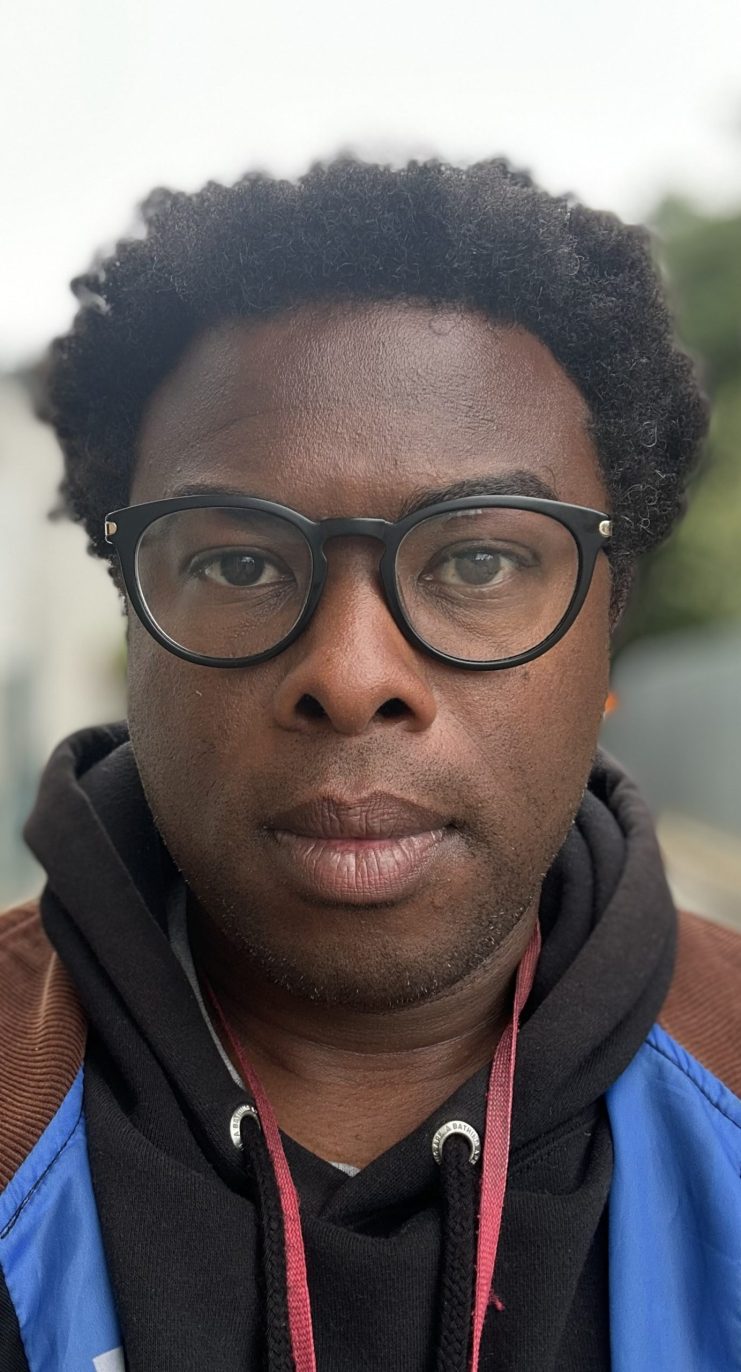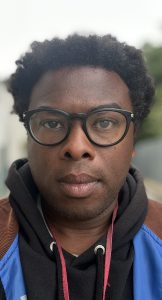
Teaching with Intention: Supporting English Learners Through Inquiry and Community
Going into the 24-25 school year, I knew I was going to have more students who were English Language Learners (ELLs) in my Career Technical Education (CTE) course titled “Introduction to Educational Psychology.” With this in mind, I made it a focus to engage in all professional development (PD) offerings that would enrich and deepen my teaching practice with ELLs in mind. The first significant opportunity was the Lead By Learning Series offered by the Oakland Unified School District English Language Learner Multilingual Achievement (ELLMA) Office. I had no idea what I was getting myself into with this year-long PD Series taking place at Mills College.
At our first Inquiry session, I was asked to think of goals for my students. All I knew was that I wanted to co-create a space where students felt safe to show up authentically, while exploring and cultivating their life stories on paper and electronically. This idea I had was not dialed in as a goal, but would ultimately happen as a result of the class culture.
At our second session, I had an “ah-ha” moment. The two veteran teachers I was working with brought in pieces of student work that represented the different tiers of English Learner Language development in their respective classes. From there, they outlined their individual goals for the year and welcomed the opportunity for feedback and input. Fortunately, with the help of these two outstanding veteran teachers, I was able to refine my thinking around goal setting and dial in on something more concrete. This collaborative conversation helped me realize how teachers were using this professional development space to examine their practice with students’ data in mind. I thought, “what can I do with this mental health unit to allow me to see how students are using language more intentionally, and how can I capture that over the next few weeks, within what we are already doing?”
As I began to redesign my Mental Health unit, I knew I would have the ability to collect data and celebrate the growth and courage of my students.
For the next few months, I took a look at my upcoming Mental Health unit. I was able to build in more scaffolds on graphic organizers and intentionally create more opportunities for student talk and peer-to-peer sharing and co-creation assignments that would help me gauge my students’ learning and confidence.
My academic goal was to see students expand their ideas and writing with academic language. My secondary goal was to see them cultivate their life stories through writing (more) and to take an academic risk. The second goal came to fruition with the KQED Youth Take Over experience and my focal students’ opportunity to record their narratives in the studio. To meet the first goal, I came up with a series of activities and assignments that would show me and my students the progression of their academic growth.
Lesson One
The first activity I give students is part of our daily classroom routine, which is a “Do-Now” that I assign in Google Classroom and project on the wall for the first 10 minutes of class. This gives students time to transition into class and get settled in, and it also gives me a chance for some “soft” check-ins. I make sure to remind students that I want to know what you know, not what you can look up!
The initial question was: “Without looking up the definition, what do you think/know ‘mental health’ means? Can you give me one example? How is your Mental Health currently?”.
Student Answers to the first question:
Student 1: “I believe that mental health is how you feel every day and how you express your feelings if you have self-control of your emotions.”
Student 2: “I just know that mental health means to learn well and work well.”
Student 3: “Mental health is how you are mentally. Like how you feel. When you mentally feel good emotionally.”
This then prompted our class discussion. Students had the opportunity to share and hear the perspectives of their peers. These 5-7 minute conversations were followed by the reading of the definition, which grounds everyone in the same framing. We then moved into a brief lecture with slides and a note catcher created for students to follow along and take notes.
Initial findings after the first lesson:
The initial responses were more informal, reflecting a developing understanding of what mental health is, which was influenced more by the language they hear daily than by the academic language they were learning at the time.
Lesson #2
The 2nd lesson was an assignment where students worked with a partner of their choosing to help them gain a deeper collective understanding of mental health and ultimately form a definition of “Mental Health” from their perspective and voices. Students watched videos, answered a short multiple-choice quiz, responded to two short-answer questions, and, lastly, created one slide that included their decided-upon definition and two images that reflected someone in a healthy mental health state and someone who may be struggling. Below is their final answer, which they shared on their Mental Health Presentation slide.
Student Answers to the 2nd Question:
Student 1: “Mental health is feeling good about yourself, handling life’s ups and downs, and getting along with others. It’s about being able to think clearly, make good decisions, and enjoy life.”
Student 2: “Mental health is the emotional well-being that helps us manage stress and enjoy life.”
Student 3: “Mental health refers to a person’s emotional, cognitive and behavioral well-being. It is a state of balance and stability that allows people to: Face the challenges and tensions of the daily life, Develop and maintain healthy relationships. Carry out activities and achieve personal goals. Feel safe and connected with yourself and with others.”
Findings after the second lesson:
The second set of answers to the question seemed more thoughtful and informed. All three students demonstrated a more developed and stronger grasp of what mental health encompasses, including the social-emotional, cognitive, and behavioral dimensions covered in class. Their responses reflected a more accurate and youth-centered understanding of mental health, incorporating holistic approaches influenced by intentional learning, peer-to-peer discussions, and exposure to mental health frameworks.
I knew that if as Spanish speakers, they were able to express themselves in English without fear of being judged, the entire class and community would benefit from their life experiences and perspective. Throughout the process, I learned that even our ELLs are often seeking like-minded people in their peer groups. If teachers help co-create inviting educational environments where students can foster and explore healthy, mutually beneficial relationships centered on learning and voice, we may see more students excited about learning.
By the end of the semester, two out of three focal students had their work published on KQED’s website, and all three earned A’s for the semester, wrapping up a challenging junior year of High School in a new country.
One of the most enjoyable aspects of this experience was participating in the Lead by Learning Inquiry group alongside two other team members from my pathway and two other teachers from our site, whom I had not previously worked directly with. Through the group we learned that we share students and I was able to hear about the positive experiences students were having in my class and the excitement around the topics we discussed. S
At the end of this experience, it was awesome to see the growth in my students’ understanding, and just as importantly, I had found something that worked!
 Edward Hill is the new C.H.E.D. (Community Health & Education) Pathway Director at Skyline High School, where he teaches Introduction to Community Health & Education (10th) and Introduction to Educational Psychology (11th) and serves as one of the Black Student Union Advisors. He is entering his 4th year of teaching at Skyline High School. Previously, he worked in the Berkeley Unified School District, where he held multiple positions for 15 years inside and outside the classroom. His diverse coaching background of over 20 years has afforded him the chance to work with a range of communities. When he is not at school, he is spending time outdoors with his family, friends, and the community as a volunteer leader with the not-for-profit organization Outdoor Afro, which promotes more Black joy and participation in outdoor spaces.
Edward Hill is the new C.H.E.D. (Community Health & Education) Pathway Director at Skyline High School, where he teaches Introduction to Community Health & Education (10th) and Introduction to Educational Psychology (11th) and serves as one of the Black Student Union Advisors. He is entering his 4th year of teaching at Skyline High School. Previously, he worked in the Berkeley Unified School District, where he held multiple positions for 15 years inside and outside the classroom. His diverse coaching background of over 20 years has afforded him the chance to work with a range of communities. When he is not at school, he is spending time outdoors with his family, friends, and the community as a volunteer leader with the not-for-profit organization Outdoor Afro, which promotes more Black joy and participation in outdoor spaces.
Interested in working with Lead by Learning to support collaboration and the professional growth of your educators and teacher leaders? Connect with a member of our team to learn more about our partnerships.
